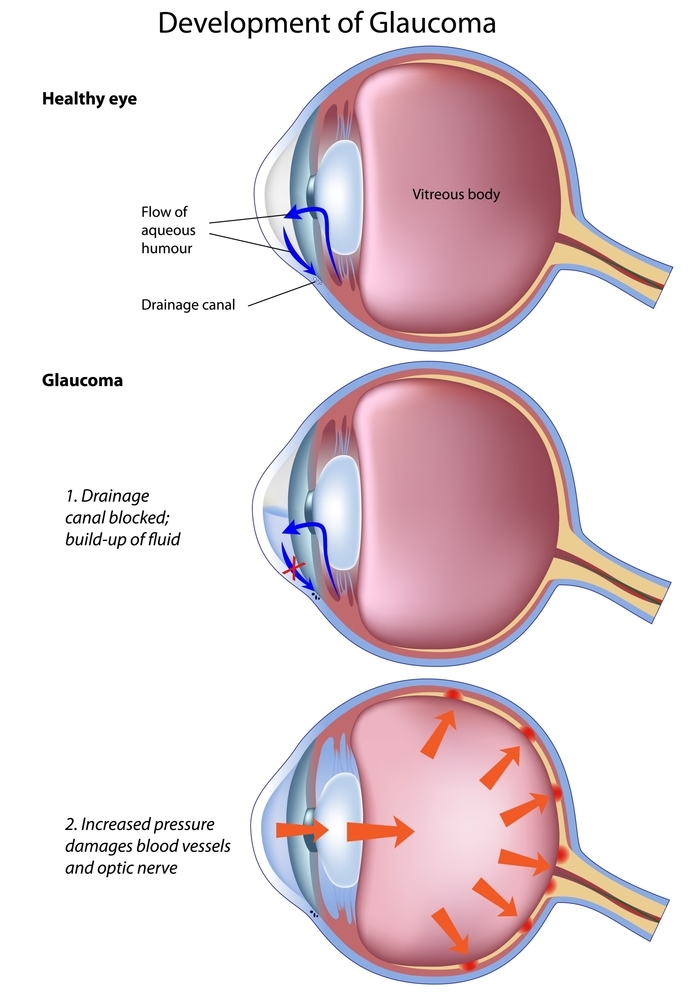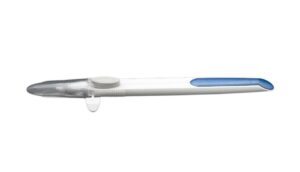Glaucoma is a degenerative eye disease that is the third leading cause of blindness in the world. The most common type of glaucoma does not have any symptoms.
That is why glaucoma has the nickname of the silent thief of sight. Unfortunately, by the time you have symptoms causing vision loss, it is often already too late. At See Clearly Vision, our eye doctors are experts at treating patients with glaucoma and other serious eye conditions.
What Happens if You Have Glaucoma?

Glaucoma causes vision loss by damaging your optic nerve. It occurs when the fluid in your eye cannot drain properly from the eye.
The pent-up fluid creates pressure in your eye that builds over time and presses on the optic nerve. This pressure on the optic nerve can damage it and cause vision loss.
Once you have lost some or all your vision from optic nerve damage, there is no going back. Glaucoma has no known cure, and it is irreversible.
Some techniques can manage symptoms and reduce pressure in your eye. But these only slow down the deterioration of your eyesight.
What Are The Types of Glaucoma?
There are numerous types of glaucoma that all have different effects and treatments. However, the most common form of glaucoma is primary open-angle glaucoma.
Primary Open-Angle Glaucoma
Primary open-angle glaucoma or POAG is the most common type of glaucoma. It has no symptoms and increases eye pressure over time.
Eye pressure, also called intraocular pressure or IOP, can increase until it is too late, and your optic nerve suffers damage without you realizing it.
Open-angle glaucoma means the drainage angle in the front of your eye is open. It occurs when the trabecular meshwork in your eyes gets blocked, clogged, or closed.
This meshwork, also called the drainage network, increases IOP by causing fluid to back up in your eye when blocked.
Closed-Angle Glaucoma
A problem in your trabecular meshwork does not cause closed-angle glaucoma. Instead, it comes from a closed drainage angle.
The trabecular meshwork sits inside the drainage angle in the front of your eye. It is the pathway that fluid takes as it leaves the back of your eye and drains out the front.
The meshwork is healthy in this less common form of glaucoma, but there is a pinch in the drainage angle. Even though the meshwork could drain fluid from your eye, the fluid can’t leave. It is stuck because the drainage angle of your eye has closed.
Closed-angle glaucoma develops quicker than POAG, and it does have noticeable symptoms. These include:
- Sudden vision loss
- Eye redness
- Eye pain
- Headaches that don’t respond to pain medication
- Nausea and vomiting
If you experience any of these symptoms, you must seek immediate medical attention. Timely treatment of closed-angle glaucoma can save your vision. But, you must get treated quickly, or closed-angle glaucoma can cause rapid vision loss.
Does Glaucoma Have Symptoms?
Closed-angle glaucoma has obvious symptoms that come on rapidly. Primary open-angle glaucoma does not have symptoms.

Instead, it builds pressure in your eyes without you knowing until it causes vision loss. This loss of eyesight appears to be sudden vision loss. But, it isn’t rapid. Instead, it develops gradually over months or years until it steals your vision.
Until damage to your eyesight occurs, primary open-angle glaucoma does not have any apparent symptoms. The only way to know for sure that you have glaucoma is to receive a diagnosis from an eye doctor .
They will be able to tell if you have glaucoma. That is why regular visits to your eye doctor are so crucial.
Without regular appointments with your eye doctor, there is no way to know you have glaucoma. Even if you have glaucoma, you may not notice any damage to your eyesight until vision loss has already occurred.
How is Glaucoma Diagnosed?
The first thing your eye doctor checks when they are looking for glaucoma is the angle of your eye. The test they use to do this is a gonioscopy.
They use a microscope or slit lamp to look into your eye to examine the angle between your iris and cornea. This location is where your drainage angle is.
The next test after a gonioscopy is tonometry, which will show if glaucoma is present in your eyes. Tonometry presses on your eye and measures the resistance to determine IOP.
Your IOP can then get compared to baseline average IOPs and your IOP from previous exams. If there is an increase or if your IOP is significantly higher than the normal range, you may have glaucoma.
Your eye doctor will recommend therapy to manage the pressure in your eyes.
They will also want to see you at least twice a year. These visits ensure that your glaucoma is under control and not further damaging your optic nerve.
How Do You Treat Glaucoma?
There are several ways to treat glaucoma, depending on the severity of your symptoms. Common treatment options include:
Eye Drops
Eye drops are a common medication used to manage glaucoma. The aqueous drops reduce your IOP in one of two ways.
They can decrease eye fluid production to limit the amount of fluid that can get backed up. Or, they can increase the rate of outflow from your eyes.
Either way, they ensure there is less fluid in your eyes to reduce your intraocular pressure. However, eye drops for glaucoma may not be suitable for everyone.
The drops do have potential side effects. If you experience these, you can explore other treatment options.
Durysta
Durysta is a dissolvable glaucoma treatment. It gets implanted in your eye and continually administers a medication called bimatoprost for 15 weeks until it dissolves completely.

Bimatoprost gets released as it dissolves, decreasing intraocular pressure. This means you don’t need to take your glaucoma medication while the Durysta device remains in your eye.
Open-angle glaucoma patients who find it difficult to remember to take their eye drops may be good candidates for Durysta.
Peripheral Iridotomy
Peripheral iridotomy is a treatment for closed-angle glaucoma. It uses a laser to create a small hole in your iris.
This hole allows fluid to flow normally from the back of your eye to drain out the front when you have a closed drainage angle.
Selective Laser Trabeculoplasty (SLT)
Selective laser trabeculoplasty or SLT is a treatment for open-angle glaucoma. If you have primary open-angle glaucoma, your drainage meshwork is not functioning correctly.
SLT stimulates the spongy meshwork with a laser to allow more fluid to flow through it and out of your eye. More outflow results in lower IOP and less risk of damage to your optic nerve.
iStent
The FDA-approved iStent procedure implants two stents in your eye during cataract surgery. The stents connect the back of your eye with the natural drainage in the front.
The stents create two openings that bypass a blocked drainage meshwork. As a result, the iStent effectively reduces IOP in patients with open-angle glaucoma and could end your need for glaucoma medications.
The stents get implanted during cataract surgery. Adding stents to your cataract surgery can treat both conditions with one procedure.
Having glaucoma can seem scary, but it doesn’t have to be. But with regular visits to the eye doctor, you can catch it early and manage it. Have questions about glaucoma and how to treat it? Schedule an appointment at See Clearly Vision in Tysons, VA, or Arlington, VA to find out more!



















